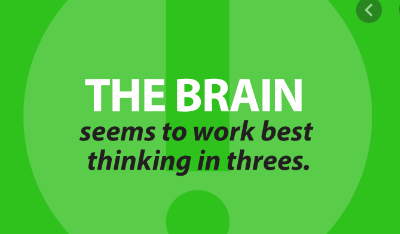What we see depends on what we look for. I’ve been providing my readers and subscribers free (hopefully useful) information for years now and today I’m changing just how I do that. Therefore, I will fill a need for E-books to improve your marketing ideation.
For some time now marketers like us have been using content, like eBooks, to convince visitors to subscribe to their email list.
For the most part, this has been a fair way to trade information and learn.
Today, I’m going to change the model a bit.
Instead of offering the odd eBook or webinar every month or so I’ve created the Digital Spark Marketing Learning Center Content Community so you can have it all whenever you want.
Related post: Guinness Marketing Campaign Shows Their Creativity
It’s fast, free, and convenient.
I believe this is a much better way to both offer and consume content. I think you’ll be pleased with just how much content we have waiting for you.
Here are 6 Remarkable E-books that will be added to the learning center effective today:
Marketing ideas … A Guidebook on How to Use Content Marketing
Have you seen statistics on the amount of information available today … doubling every 18 to 24 months? Amazing isn’t it? So if you are thinking of a strategy to use content marketing, be prepared to generate top quality products.
Why? It is simple. Statistic Brain says that our average attention span has dropped from 12 seconds in 2000 to 8 seconds – one second less than a goldfish! It is not surprising then that the battle over content marketing is getting more difficult every day.
Related content: Remarkable Examples of Content Marketing
All this available information and data is creating a battle for customer attention between brands, publishers, and each one of us who creates content. But more importantly, it’s forcing businesses to think and act much more competitively.

Guidebook on How to Create Effective Brand Marketing
As marketing types, we confess to having a visual bias when it comes to an expression of creative branding. We tend to experience a brand primarily through our eyes, by watching how it draws us into its world. And when we’re working with clients on a small business brand marketing project, one of our first steps is to create a book of selected pictures and graphics that create a feeling of the brand’s character.
Do you express feelings and emotions often with your customers? Are you aware of the ways you are can influence brand attention? Well, remember this: the more feelings and emotions you express, the more attention to your brand. And the more influence it can create. Not rocket science is it? But without it, you will be losing attention to your brand.
As long as it’s positive, there is no such thing as too much brand attention. If you play your cards right, you can roll all of that great attention into growth for your company.
A Guidebook on How to Build Value Propositions and Taglines
What would you say is the most important element of marketing for your business? Not a trick question, but one that many of our clients miss. It is how to build value propositions in our opinion. Like Jack Welch says, if you don’t have a competitive advantage, don’t compete. It is that simple. Save your money and time.
We have found many businesses that cannot articulate how their business is truly unique.1 What analogy to this situation stands out in our minds? Trying to win against your competition without good business differentiation is like trying to sail with no wind.
There are two ways to win in a competitive market:
Achieve sustainable lower cost (and therefore price) than your competition for the same products and services (very difficult, if not impossible)
Deliver more value, despite the equal or higher price

There is obviously not one answer that fits all in the question of customer choices.
Guidebook on How to Win Word of Mouth Marketing
You can’t say it. You have to get consumers to say it to each other.
At its core, building winning word of mouth marketing is simply to spread ideas that help your business or cause. It’s putting material out there that by its very nature attracts attention and discussion.
Perhaps the most objective way to look at the practice of this marketing is to examine the research of some highly intelligent folks who have dedicated years to deciphering the common elements of viral content.
Is this guidebook, I’ll dissect some of my favorite research from an associate professor at the Wharton School of Business, as well as examine some classic word of mouth marketing examples to see what lessons can be had from some very successful campaigns.
A How-to Guidebook for Creating Winning Advertising
Stop interrupting what people are interested in, and be what people are interested in.
It has been said that advertising is the price to be paid for being unremarkable. That may be true, but I have noticed, despite the growth in online marketing, that even remarkable businesses also advertise the old fashion way. It is a key component of your marketing campaign, for awareness or consumer education of your value. Lots of helpful information in this guidebook that will assist in creating winning advertising.
According to Nielsen, there are 27,000,000 pieces of content are shared each day. And Statistic Brain says that our average attention span has dropped from 12 seconds in 2000 to 8 seconds – one second less than a goldfish!
We check our phones 150 times per day. We check our email up to 30 times an hour. And the amount of information in the world continues to double every 18 months.
All this available information and data is creating a battle for customer attention between brands, publishers, and every one of us who creates content. But more importantly, its forcing businesses to think and act like publishers.
Ever written an ad for print advertising, or thought about it? I’ve done marketing for my clients in small businesses for the past 4+ years and I’ve learned a few things about making advertising look professional even on a tight budget. Many small businesses don’t have a lot of time or resources to have ads professionally made. So what’s a small business to do?
If everyone is creating content, how does a business break through the noise? How do we reach our customers in a way that engages them?
A How-to Guide for Small Business Social Media Marketing
Networked consumers know more than most companies about their own products and services. Whether the facts are good or bad, they tell everybody about what they know.
Have you had this experience with networked consumers? Certainly motivates you to know about small business social media marketing, doesn’t it?
“Social media” is a way for people to communicate and interact online. While it has been around since the dawn of the World Wide Web, in the last 10 years or so we’ve seen a surge in both the number and popularity of social media sites. It’s called social media because users engage with (and around) it in a social context, which can include conversations, commentary, and other user-generated annotations and engagement interactions.
Publishing content has become exponentially simpler over the last several years, which has helped skyrocket the use of social media. Non-technical web users are now able to easily create content on a rapidly growing number of platforms, including those that are owned (hosted communities, blogs, etc.), rented (social networks or third-party communities), and occupied (commenting, contributing, etc.).
For businesses, the shift in web consumerism and accompanying rise in social media brings excellent opportunity. The real magic lies in the ability to grow lasting and scalable relationships with your organization’s customer base through social media. Whether your business is listening and engaging or not, customers are having conversations relevant to your operations. It’s better to be part of the conversation, right?
I hope you find our free guidebooks as valuable as you do the learning center. We encourage you to drop us an email to let us know what you think.

Need some help in capturing more customers from your marketing strategies? Creative ideas to help the differentiation with potential customers?
All you get is what you bring to the fight. And that fight gets better every day you learn and apply new ideas.
When things are not what you want them to be, what’s most important is your next step.
Test. Learn. Improve. Repeat.
Are you devoting enough energy to improving your marketing, branding, and advertising?
Mike Schoultz is the founder of Digital Spark Marketing, a digital marketing and customer service agency. With 40 years of business experience, he blogs on topics that relate to improving the performance of your business.
Digital Spark Marketing will stretch your thinking and your ability to adapt to change. We also provide some fun and inspiration along the way.

